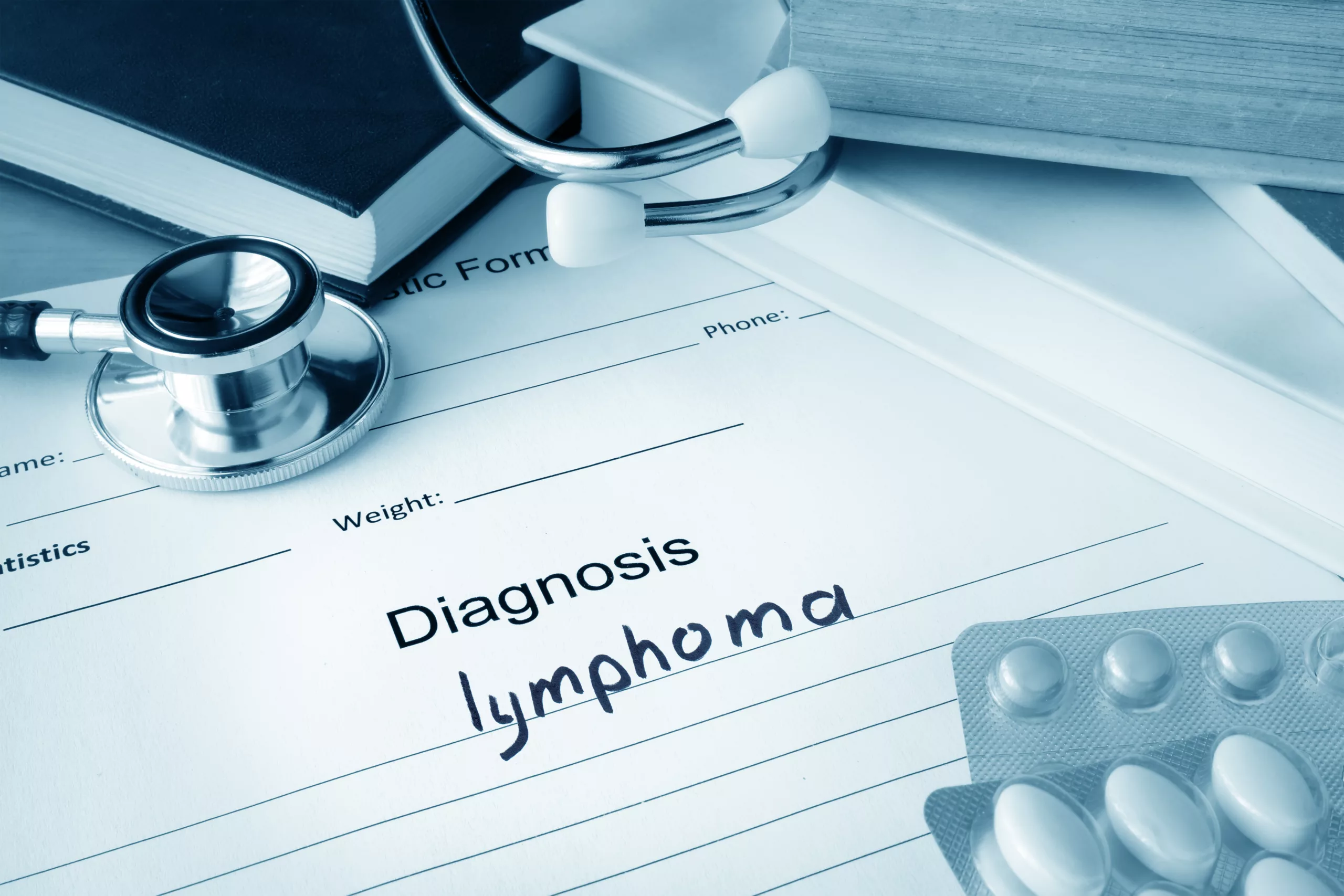
Lymphoma is a type of cancer that begins in the lymphatic system, which includes your lymph nodes, spleen, thymus gland, and bone marrow. The lymphatic system is part of your immune system and helps protect your body against infections.
If you are aware of the symptoms and risk factors of lymphoma, it can help you stay healthy and empower you to seek treatment if you think you may have this condition.
Types of Lymphoma
There are two main types of lymphoma: Hodgkin’s lymphoma and non-Hodgkin’s lymphoma. Non-Hodgkin’s lymphoma is more common than Hodgkin’s lymphoma, as it accounts for an estimated 90% of all diagnosed lymphomas.
In Hodgkin’s lymphoma, white blood cells spread uncontrollably to cause painless swelling in the lymph nodes. In non-Hodgkin’s lymphoma, white blood cells grow abnormally and lead to the formation of tumors throughout the body.
The main difference between Hodgkin’s and non-Hodgkin’s lymphoma is that people with Hodgkin’s have large, cancerous cells called Reed-Sternberg cells. These cells are not present in non-Hodgkin’s lymphoma.
Other types of lymphoma include:
- Chronic lymphocytic leukemia, a cancer of the blood and bone marrow
- Cutaneous B-cell lymphoma, cancer that begins in white blood cells known as B cells
- Cutaneous T-cell lymphoma, cancer that begins in white blood cells known as T cells
- Waldenstrom macroglobulinemia, a type of non-Hodgkin’s lymphoma in which abnormal, cancerous white blood cells produce a protein that builds up in the blood to cause problems with circulation
Symptoms of Lymphoma
Lymphoma does not always cause symptoms in its early stages. The primary symptom of lymphoma is enlarged lymph nodes, which can usually be detected by your doctor during a physical exam. Enlarged lymph nodes may be felt and detected in your neck, armpit, groin, stomach, and/or upper part of the chest.
Other symptoms of lymphoma include:
- Fever and chills
- Cough
- Fatigue
- Itching rash and skin
- Night sweats
- Abdominal pain
- Loss of appetite
- Unexplained weight loss
- Shortness of breath
- Enlarged spleen (an unusual feeling of fullness in the stomach)
Many symptoms of lymphoma are the same as those of other health conditions. If you are experiencing one or more of the above symptoms, make an appointment with your healthcare provider right away to receive a physical exam and a proper diagnosis.
Causes of Lymphoma
Lymphoma occurs when white blood cells—called lymphocytes—develop a genetic mutation that causes them to multiply at a rapid pace. These abnormal cells can lead to swelling in the lymph nodes and tumors throughout the body.
Certain factors may increase your risk of developing lymphoma. Risk factors for lymphoma include:
- HIV and AIDS
- Epstein-Barr virus
- Human T-cell leukemia/lymphotropic virus (HTLV-1)
- Helicobacter pylori infection
- Hepatitis C
- Exposure to high levels of ionizing radiation
- Family history of lymphoma
- Exposure to toxins in some herbicides and pesticides
- Gender (males are at higher risk)
- Obesity
- Use of immunosuppressant drugs
How Lymphoma Is Diagnosed
The diagnostic procedure for lymphoma begins with a physical exam, during which your doctor will check for swollen lymph nodes in parts of the body, such as your neck, armpits, and groin. Next, a biopsy will be performed if your doctor suspects you may have lymphoma. This involves removing part or all of the swollen lymph nodes for testing.
Other diagnostic tests for lymphoma may include:
- Blood testing, to check for white blood cell count
- X-ray
- Bone marrow aspiration, which involves inserting a needle into the hipbone to extract a bone marrow sample
- Lumbar puncture (spinal tap), which involves inserting a needle into the spine to extract a sample of spinal fluid
- Ultrasound
- CT scan
- MRI
- Positron emission tomography (PET)
Treatments for Lymphoma
The goal of lymphoma treatment is to destroy your cancer cells. Like many other cancers, lymphoma may be treated using a variety of therapies administered by a team of medical specialists. The treatments you receive will depend on factors such as the type of lymphoma you have, the stage of your disease, and your overall health status.
Treatments for lymphoma may include:
- Surveillance. If you have slow-growing tumors and lymphoma, your doctor may monitor your condition and administer treatment only if it causes problematic symptoms.
- Radiation therapy. This treatment involves the use of high-powered energy beams that can shrink and destroy cancer cells.
- Chemotherapy. Drugs used in chemotherapy can destroy rapidly growing cancer cells.
- Bone marrow transplant. Also known as a stem cell transplant, this treatment involves removing healthy bone marrow stem cells from your body and infusing them into your blood to help you rebuild healthy bone marrow.
- Immunotherapy. Drugs used in immunotherapy can stimulate your immune system to help it destroy cancer cells.
- Targeted therapies. This treatment utilizes drugs that interact with specific proteins involved in the growth of lymphoma tumors and cancer cells.
Make an appointment with your healthcare provider if you think you may have lymphoma. Your provider can perform an exam, properly diagnose your condition, and discuss all your available treatment options.